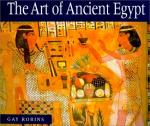|
This section contains 794 words (approx. 3 pages at 300 words per page) |

|
Preserving the Dead. Embalming, or mummification, was a basic technology important to ancient Egyptian culture. The mummy is the embalmed remains of the deceased. The word derives from the Arabic (or Persian) mumia, meaning pitch or bitumen, and was used to describe the embalmed remains of the Egyptians because they appeared to be covered with pitch. The practice of mummification may have arisen because of the natural desiccating property of the Egyptian sand. The earliest Egyptian burial sites, from the Predynastic Period (circa 3100-3000 B.C.E.), were simply shallow pits on the edge of the desert. The heat, combined with the desiccating property of the sand, served to dry out the tissues of the body before they could decompose, leaving a considerably lifelike appearance. With the introduction of more elaborate tombs, however, the body was no longer buried in sand and, as...
|
This section contains 794 words (approx. 3 pages at 300 words per page) |

|




